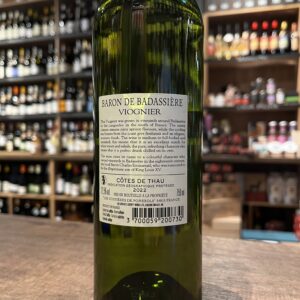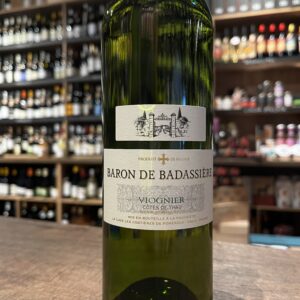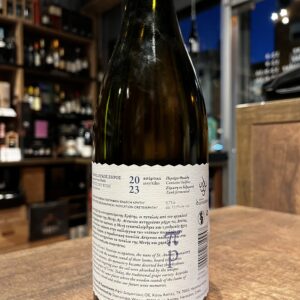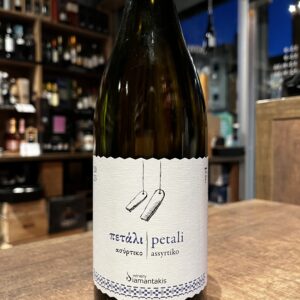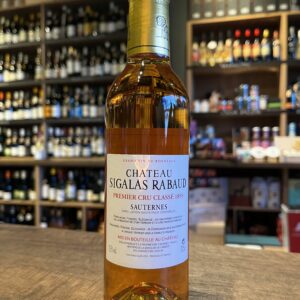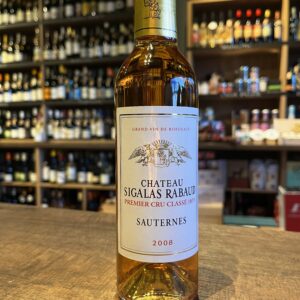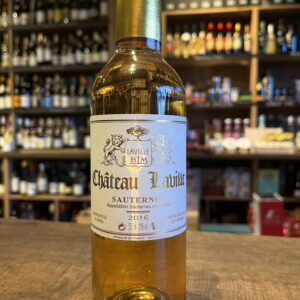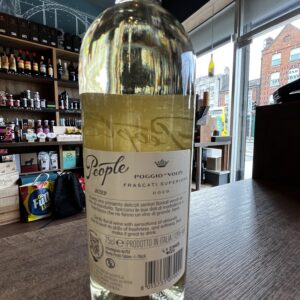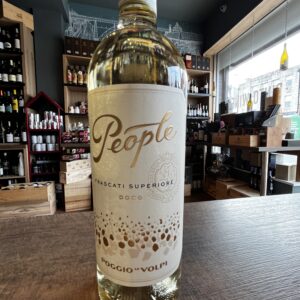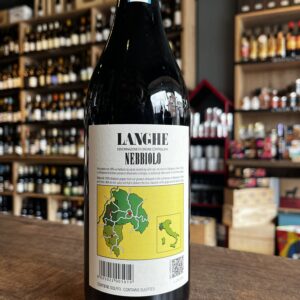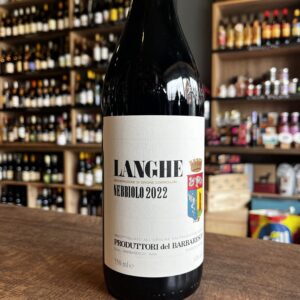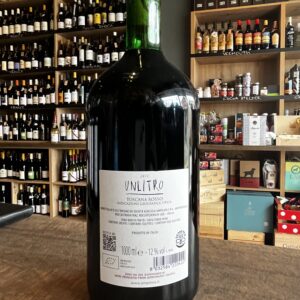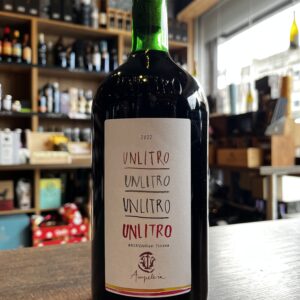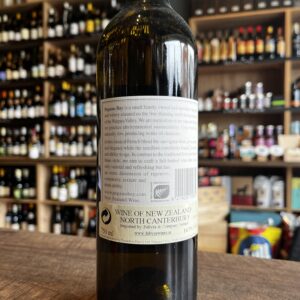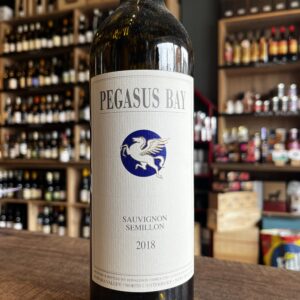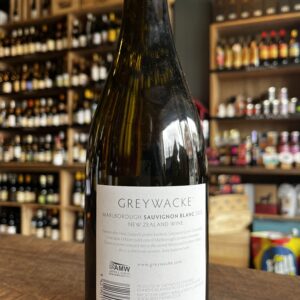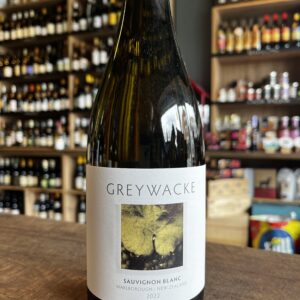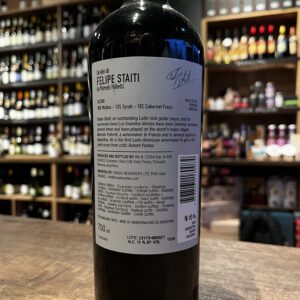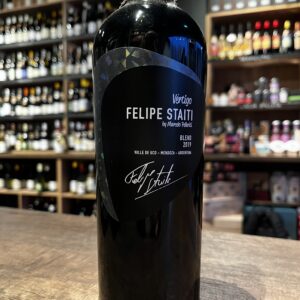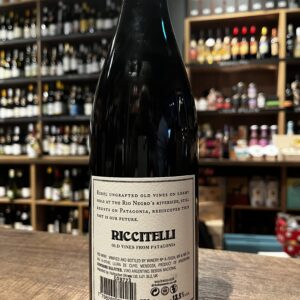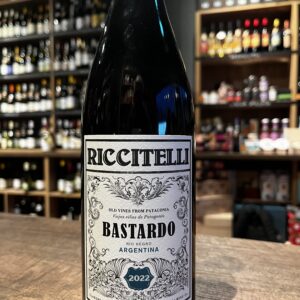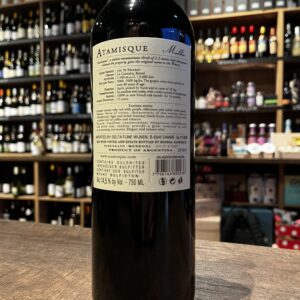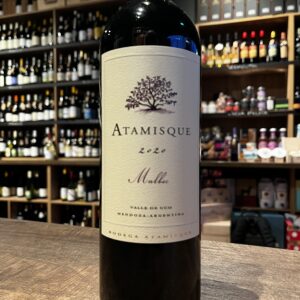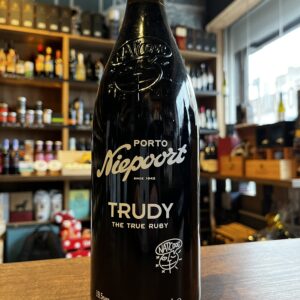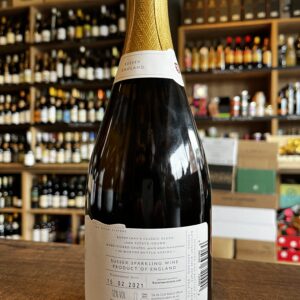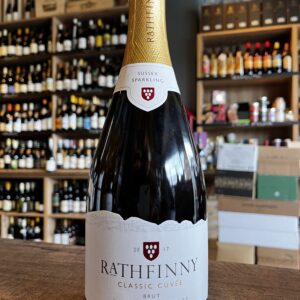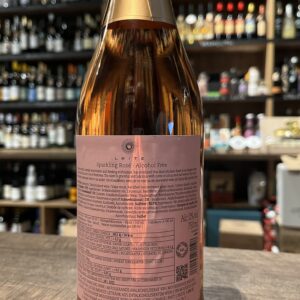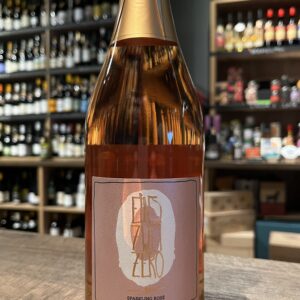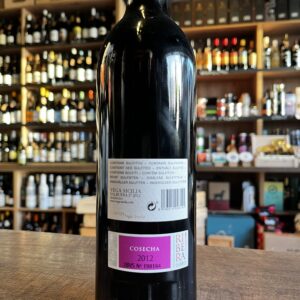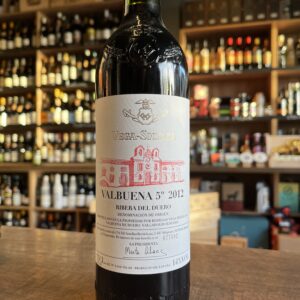-
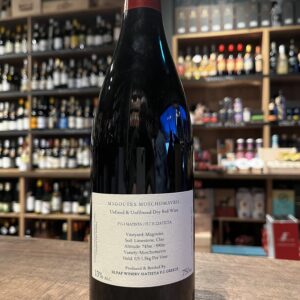
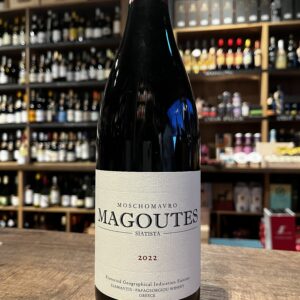 Magoutes winery, run by Dimitris Diamantis, is located in the old but forgotten region of Siatista in the mountains of northern Greece. Here vineyards have been abandoned and then revived centuries ago. The city of Siatista is nestled on the slopes of Mount Siniatsiko. The soils of the vineyards are limestone-based which adds elegance and acidity to this ruby-hued red wine. Moshomavro means 'black muscat' but is no relation in parentage or flavour! Lovers of of Beaujolais or Italian reds like pelaverga, rossesse or schiava will find a lot to appreciate in moschómavro, a variety historically interplanted with xinómavro and others in the western Macedonian mountains. Make sure to open this well in advance to get the full show, as a couple of hours of air will bring out its best qualities. It’s the ideal wine to pair with a cheese and meat board or fish. It’s also lovely with a slight chill on a warm day.
Magoutes winery, run by Dimitris Diamantis, is located in the old but forgotten region of Siatista in the mountains of northern Greece. Here vineyards have been abandoned and then revived centuries ago. The city of Siatista is nestled on the slopes of Mount Siniatsiko. The soils of the vineyards are limestone-based which adds elegance and acidity to this ruby-hued red wine. Moshomavro means 'black muscat' but is no relation in parentage or flavour! Lovers of of Beaujolais or Italian reds like pelaverga, rossesse or schiava will find a lot to appreciate in moschómavro, a variety historically interplanted with xinómavro and others in the western Macedonian mountains. Make sure to open this well in advance to get the full show, as a couple of hours of air will bring out its best qualities. It’s the ideal wine to pair with a cheese and meat board or fish. It’s also lovely with a slight chill on a warm day. -
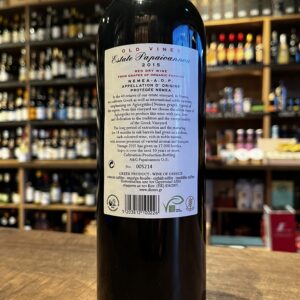
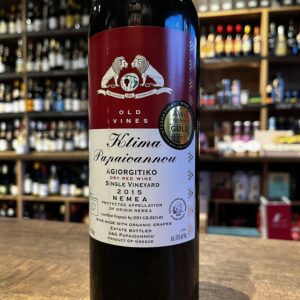 Thanasis Papaioannou was regarded as one of the most important figures of modern Greek winemaking. His belief is a combination of indigenous varieties and organic viticulture are the vital ingredients to produce balanced wines reflecting the terroir. Today, his son works with 57 hectares of organically certified vineyards, located in the Nemea region of the Peloponnese. The wines demonstrating real character at exceptional prices. Nemea is arguably Greece's most important red-wine region, located in the northeastern corner of the Peloponnese peninsula. The village of Nemea is around 20 miles (35km) southwest of Corinth, and the appellation that surrounds the village is geographically the largest in Greece. Around 40 wineries are located there and the area has seen a huge amount of investment and growth over the past few decades. The surrounding mountains and valleys have been producing wine for centuries. Agiorgitiko is an ancient Greek grape variety mostly planted in Nemea, named for the small St George's Church found within the boundaries of the appellation: Agiorgitiko translates as "St George's grape“. A wide range of styles are made from this red grape variety, from lighter, fruitier wines to rich, age-worthy examples such as this. The label references the ‘Lion of Nemea’; a creature of Greek legend, killed by Heracles. Their Old Vines cuvée is made from the estate's oldest Agiorgitiko vines. This dish with duck breast, Brussels sprouts with bacon and Polenta is a perfect partner for the Old Vines from Papaioannou, where the black cherry note is an ideal combination.
Thanasis Papaioannou was regarded as one of the most important figures of modern Greek winemaking. His belief is a combination of indigenous varieties and organic viticulture are the vital ingredients to produce balanced wines reflecting the terroir. Today, his son works with 57 hectares of organically certified vineyards, located in the Nemea region of the Peloponnese. The wines demonstrating real character at exceptional prices. Nemea is arguably Greece's most important red-wine region, located in the northeastern corner of the Peloponnese peninsula. The village of Nemea is around 20 miles (35km) southwest of Corinth, and the appellation that surrounds the village is geographically the largest in Greece. Around 40 wineries are located there and the area has seen a huge amount of investment and growth over the past few decades. The surrounding mountains and valleys have been producing wine for centuries. Agiorgitiko is an ancient Greek grape variety mostly planted in Nemea, named for the small St George's Church found within the boundaries of the appellation: Agiorgitiko translates as "St George's grape“. A wide range of styles are made from this red grape variety, from lighter, fruitier wines to rich, age-worthy examples such as this. The label references the ‘Lion of Nemea’; a creature of Greek legend, killed by Heracles. Their Old Vines cuvée is made from the estate's oldest Agiorgitiko vines. This dish with duck breast, Brussels sprouts with bacon and Polenta is a perfect partner for the Old Vines from Papaioannou, where the black cherry note is an ideal combination. -
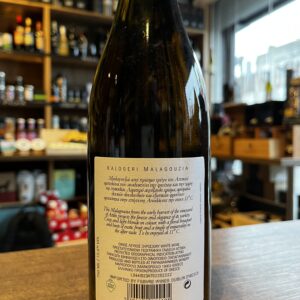
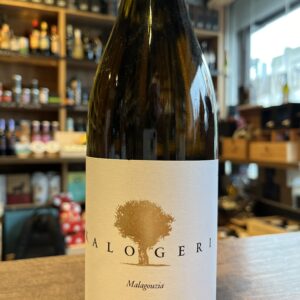 Domaine Papagiannakos was established in 1919 in the heart of the plain of Mesogaia, Attica - just 30km from the shadow of the Acropolis. Third generation winemaker, Vassilis Papagiannakos, was born and bred in Markopoulo, and grew up around the family winery. At that time the Savatiano variety was the winery' s sole focus - but later Malagouzia was introduced, along with Cabernet Sauvignon, Merlot and other varieties. Vassilis owns 10 hectares of vineyard in the Attica region, and maintains long-term leases on a further 20 hectares, with vines on average 50-60 years old. Rocky, sandy, clay topsoil nurtures low yielding bush vines - extremely limited irrigation is employed. The Papagiannakos family continues its traditions whilst bringing the winery into the 21st Century with a stunning and innovative bioclimatic winery. Pair it with Fish Fried, Poultry Casseroles White, Risotto
Domaine Papagiannakos was established in 1919 in the heart of the plain of Mesogaia, Attica - just 30km from the shadow of the Acropolis. Third generation winemaker, Vassilis Papagiannakos, was born and bred in Markopoulo, and grew up around the family winery. At that time the Savatiano variety was the winery' s sole focus - but later Malagouzia was introduced, along with Cabernet Sauvignon, Merlot and other varieties. Vassilis owns 10 hectares of vineyard in the Attica region, and maintains long-term leases on a further 20 hectares, with vines on average 50-60 years old. Rocky, sandy, clay topsoil nurtures low yielding bush vines - extremely limited irrigation is employed. The Papagiannakos family continues its traditions whilst bringing the winery into the 21st Century with a stunning and innovative bioclimatic winery. Pair it with Fish Fried, Poultry Casseroles White, Risotto -
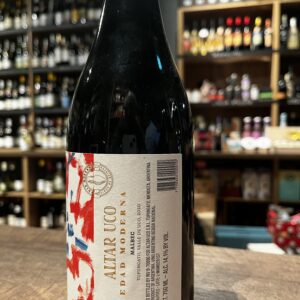
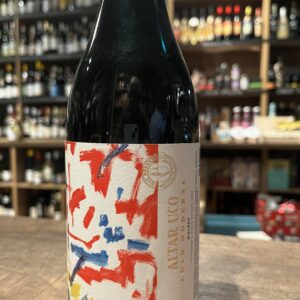 "The young and tender 2020 Edad Moderna Malbec feels a bit raw and wild, showing the character of the place. It is a bit riper, reflecting a warmer and drier year, showing notes of licorice and black cherries. It fermented in raw concrete, where it matured for eight months. It's a bit chewy with faint rusticity, and it developed balsamic nuances with time in the glass"
"The young and tender 2020 Edad Moderna Malbec feels a bit raw and wild, showing the character of the place. It is a bit riper, reflecting a warmer and drier year, showing notes of licorice and black cherries. It fermented in raw concrete, where it matured for eight months. It's a bit chewy with faint rusticity, and it developed balsamic nuances with time in the glass" -
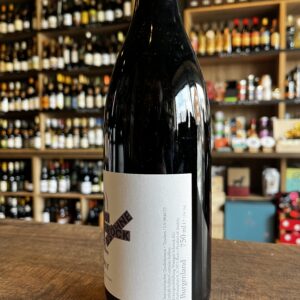
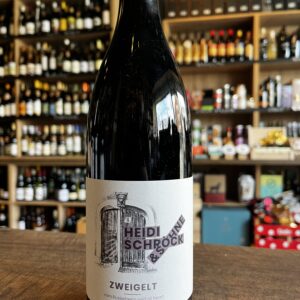 Heidi took over her family’s 10 hectare estate in 1983, in the famous village of Rust, Burgenland, just five miles from the Hungarian border. Her south-east-facing vineyards along the western banks of Lake Neusiedl form a semi-amphitheatre, providing considerably more sunlight hours compared to the rest of Austria. The soils here are sandy with clay, gravel, grey quartz and schist. Heidi sustainably cultivates the classic Austrian varieties, Zweigelt, Blaufränkisch and St Laurent, as well as pioneering the revival of traditional varieties, such as Furmint, better known today across the Hungarian border. Heidi, Georg and Johannes. One woman, two young men. Mother and sons. In an ancient winegrower´s estate in the center of the renowned Freistadt Rust, the vinophile trio produces some of the most sought after white, rosé, red and sweet wines made in Austria - principally from autochthonus varieties of the region. The shining stars of the company, Schröck sweet wines, have represented the house for many years. Liquid elegance dressed in gold. Heidi Schröck & Söhne. A small, fine established company with big, aspiring ideas. Open, inspired, passionate. And pretty delicious
Heidi took over her family’s 10 hectare estate in 1983, in the famous village of Rust, Burgenland, just five miles from the Hungarian border. Her south-east-facing vineyards along the western banks of Lake Neusiedl form a semi-amphitheatre, providing considerably more sunlight hours compared to the rest of Austria. The soils here are sandy with clay, gravel, grey quartz and schist. Heidi sustainably cultivates the classic Austrian varieties, Zweigelt, Blaufränkisch and St Laurent, as well as pioneering the revival of traditional varieties, such as Furmint, better known today across the Hungarian border. Heidi, Georg and Johannes. One woman, two young men. Mother and sons. In an ancient winegrower´s estate in the center of the renowned Freistadt Rust, the vinophile trio produces some of the most sought after white, rosé, red and sweet wines made in Austria - principally from autochthonus varieties of the region. The shining stars of the company, Schröck sweet wines, have represented the house for many years. Liquid elegance dressed in gold. Heidi Schröck & Söhne. A small, fine established company with big, aspiring ideas. Open, inspired, passionate. And pretty delicious -
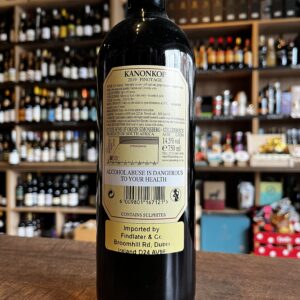
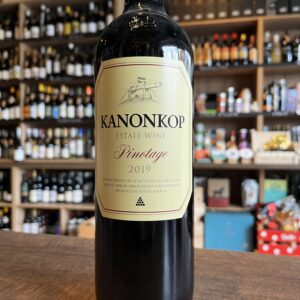 The name Kanonkop is derived from a hillock (kop) on the Simonsberg mountain above the wine estate from where, during the 17th and 18th centuries, a cannon (kanon) was fired to announce the arrival of sailing ships entering Table Bay. The roar of the cannon would be the signal to local farmers, who were waiting to make the 50-kilometer journey to the harbour, to load up their wagons with fresh fruit and vegetables to barter their produce. The first wines bearing the Kanonkop label were produced in 1973. To wine lovers familiar with the centuries old châteaux and domaines of Bordeaux and Burgundy respectively, the winemaking history of our estate may seem surprisingly young. For 1973 was the year in which Kanonkop’s contention for a place in the annals of South African wine greatness began, just three years before the death of the man to whom the wine estate owes everything it has achieved and all the recognition it has attained: Paul Sauer.
The name Kanonkop is derived from a hillock (kop) on the Simonsberg mountain above the wine estate from where, during the 17th and 18th centuries, a cannon (kanon) was fired to announce the arrival of sailing ships entering Table Bay. The roar of the cannon would be the signal to local farmers, who were waiting to make the 50-kilometer journey to the harbour, to load up their wagons with fresh fruit and vegetables to barter their produce. The first wines bearing the Kanonkop label were produced in 1973. To wine lovers familiar with the centuries old châteaux and domaines of Bordeaux and Burgundy respectively, the winemaking history of our estate may seem surprisingly young. For 1973 was the year in which Kanonkop’s contention for a place in the annals of South African wine greatness began, just three years before the death of the man to whom the wine estate owes everything it has achieved and all the recognition it has attained: Paul Sauer. -
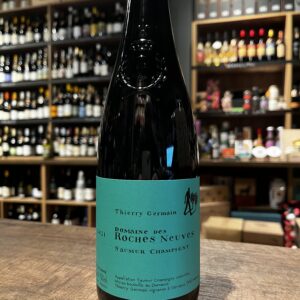 The 50-hectare Domaine des Roches Neuves is run by Bordelais Thierry Germain who originally was from Bordeaux and is situated in the appellation of Saumur-Champigny. The winery has existed since 1850, and since purchasing the estate in 1991, Thierry run it with such incredible will and tenacity that turned Domaine des Roches Neuves into one of the finest wineries/farms in France. Not to forget it wasn't without the help of his mentor and spiritual father Charly Foucault of Clos Rougeard The estate is run strictly along biodynamic lines, harvesting is manual and yields are low. This stunning wine pairs well with pork rillettes, lamb shank confit, grilled artichokes. Try it with just cheeses and charcuterie
The 50-hectare Domaine des Roches Neuves is run by Bordelais Thierry Germain who originally was from Bordeaux and is situated in the appellation of Saumur-Champigny. The winery has existed since 1850, and since purchasing the estate in 1991, Thierry run it with such incredible will and tenacity that turned Domaine des Roches Neuves into one of the finest wineries/farms in France. Not to forget it wasn't without the help of his mentor and spiritual father Charly Foucault of Clos Rougeard The estate is run strictly along biodynamic lines, harvesting is manual and yields are low. This stunning wine pairs well with pork rillettes, lamb shank confit, grilled artichokes. Try it with just cheeses and charcuterie -
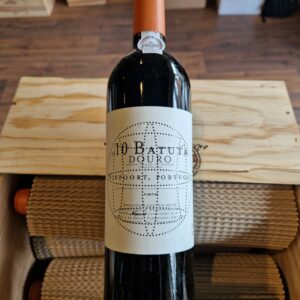 Niepoort is a family business dating back to 1842. Its winemaking tradition began in the Douro region, with the roduction of Port wine. Nowadays has a foothold in all the major Portuguese regions with still wines production outside the Douro Valley. Know-how, enthusiasm and an innovative mindset have passed down from generation to generation, making Niepoort one of the most authentic and notable Portuguese wine producers. The grapes to produce this wine come from Quinta do Carril, from a north-facing vineyard with more than 70 years, and also from old vineyards about 100 years old near Quinta de Nápoles. Niepoort sums up this elegant bottling well by saying “Batuta is a wine of extremes, having more of everything, is at the same time, the one with a more discrete behavior.” Quite so this year (and most), as the wine opens with subtlety and elegance, seeming rather mute. It is somewhat tinged by oak early in its life. That will be easily absorbed. It takes some air and patience to see what this sometimes too subtle wine has, but there is good structure underneath (and a little tannic pop that emerges with air) that should allow the wine to develop well and have the time to acquire some complexity, which is often its best feature. It has a very Burgundian feel, with a silky, graceful mid-palate. There is nothing obvious about this bottling in any year. This year, certainly, it is a Batuta that is perhaps subtle to a fault, but it will be a perfect food wine and when you are drinking it you will suddenly realize how much you like it.'' Time will tell, definitely one of the great current masters of winemaking. Not just in Portugal but in the world
Niepoort is a family business dating back to 1842. Its winemaking tradition began in the Douro region, with the roduction of Port wine. Nowadays has a foothold in all the major Portuguese regions with still wines production outside the Douro Valley. Know-how, enthusiasm and an innovative mindset have passed down from generation to generation, making Niepoort one of the most authentic and notable Portuguese wine producers. The grapes to produce this wine come from Quinta do Carril, from a north-facing vineyard with more than 70 years, and also from old vineyards about 100 years old near Quinta de Nápoles. Niepoort sums up this elegant bottling well by saying “Batuta is a wine of extremes, having more of everything, is at the same time, the one with a more discrete behavior.” Quite so this year (and most), as the wine opens with subtlety and elegance, seeming rather mute. It is somewhat tinged by oak early in its life. That will be easily absorbed. It takes some air and patience to see what this sometimes too subtle wine has, but there is good structure underneath (and a little tannic pop that emerges with air) that should allow the wine to develop well and have the time to acquire some complexity, which is often its best feature. It has a very Burgundian feel, with a silky, graceful mid-palate. There is nothing obvious about this bottling in any year. This year, certainly, it is a Batuta that is perhaps subtle to a fault, but it will be a perfect food wine and when you are drinking it you will suddenly realize how much you like it.'' Time will tell, definitely one of the great current masters of winemaking. Not just in Portugal but in the world


